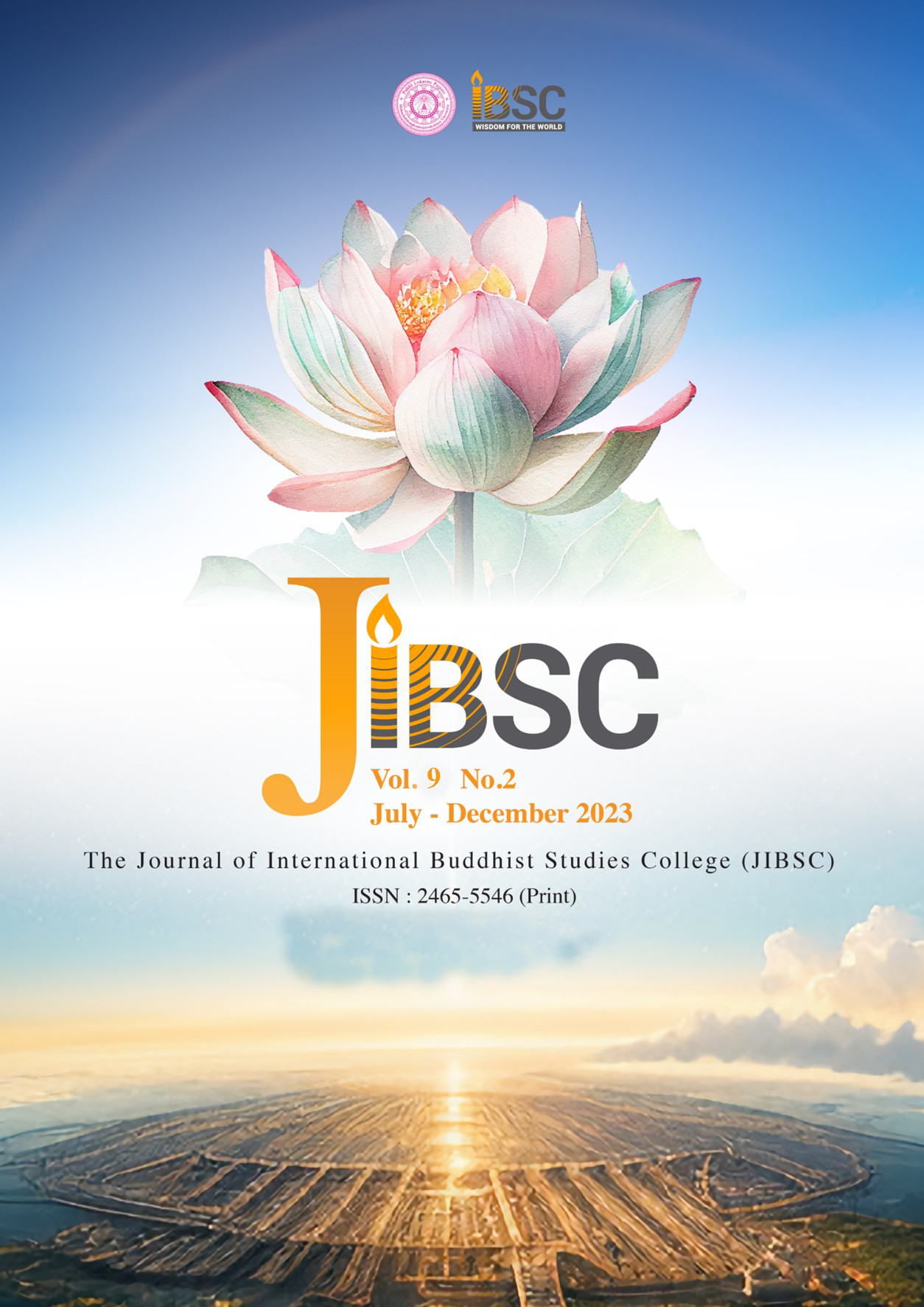The Way to Practice Applied Mindfulness in the tradition of Thich Nhat Hanh
Main Article Content
Abstract
The objectives of this research are: (1) to study the concept of applied mindfulness according to Thich Nhat Hanh Tradition, (2) to understand the application of applied mindfulness in the daily lives of monks and nuns from Thich Nhat Hanh's tradition, and (3) to support the practice of applied mindfulness of each individual and society. The research focuses on Thich Nhat Hanh's tradition of monks and nuns' daily mindfulness practice, focusing on mindful breathing as a key activity, forming associative learning similar to classical conditioning theory in psychology, and enhancing daily life experiences. The study explores monks' and nuns' lived experiences and consciousness using phenomenological analysis, simple sampling, and NVivo to synthesize themes and understand the experience phenomena. The applied mindfulness, essence, and integration into daily activities form the three core themes, exploring their profound effect on emotion regulation and interpersonal connections. The findings of this study serve as a cornerstone for embarking on a spiritual journey and inspiring both the monastic community and individuals to navigate their daily struggles. Stemming from Thich Nhat Hanh's suggested approach of seamlessly blending into everyday life, this practice holds potential for application in a myriad of settings including households, educational institutions, workplaces, and other receptive communities.
Article Details
The Journal of TCI is licensed under a Creative Commons Attribution-NonCommercial-NoDerivatives 4.0 International (CC BY-NC-ND 4.0) licence unless otherwise stated. Please read our Policies page for more information on Open Access, copyright and permissions.
References
Brinkamann, S. (2018). “The SAGE Handbook of Qualitative Research: The Interview.” (N. Denzin & Y. Lincoln (eds.); 5th ed., Issue 5). SAGE Publications, Inc. https://doi.org/10.1007/s11229-017-1319-x.
Davis, D. M., & Hayes, J. A. “What are the benefits of mindfulness? A practice review of psychotherapy-related research.” Psychotherapy, 48(2), 198–208 (2011). https://doi.org/10.1037/a0022062 (accessed July 15, 2023).
Kabat-Zinn, Jon. Full Catastrophe Living: Using the Wisdom of Your Body and Mind to Face Stress, Pain, and Illness. New York City: Bantam Dell, 2005.
Morse, J. Reframing Rigor in Qualitative Inquiry (N. K. Denzin & Y. S. Lincoln (eds.); 5th ed.). SAGE Publications, Inc. 2018.
Santrock, John W. Educational Psychology. Fifth. New York City: McGraw-Hill, 2011.
Sylvia Thompson, The Irish Times: The Father of Mindfulness, on online, https://www.irishtimes.com/news/health/the-father-of-mindfulness-1.498724 (accessed October 05, 2023).
Sujato Bhikkhu (tr). “Ānāpānassatisutta: Mindfulness of Breathing.” Suttacentral.net. https://suttacentral.net/mn118/en/sujato (accessed October 07, 2023).
Sujato Bhikkhu (tr). “Mahāsatipaṭṭhānasutta: Introductory Verses.” Suttacentral.net. https://suttacentral.net/snp5.1/en/sujato (accessed October 08, 2023).
Sujato Bhikkhu (tr). “Vatthugāthā: The Longer Discourse on Mindfulness Meditation.” Suttacentral.net. https://suttacentral.net/dn22/en/sujato (accessed October 07, 2023).
Thich Nhat Hanh. Breathe, You Are Alive! The Sutra on the Full Awareness of Breathing. Berkeley, CA: Parallax Press, 2008.
Thich Nhat Hanh. Happiness: Essential Mindfulness Practices. Berkeley, CA: Parallax Press, 2009.
Thich Nhat Hanh, & Cheung, L. Savor: Mindful Eating, Mindful Life. London: HarperCollins Publisher, 2010.
Thich Nhat Hanh. Touching the Earth: Guided Meditation for Mindfulness Practice. Berkeley: Parallax Press. 2008.
W. Horsley Gantt, Ivan Pavlov: Russian Physiologist, The Encyclopedia Britannica, on online, https://www.britannica.com/biography/Ivan-Pavlov (accessed August 14, 2020).


